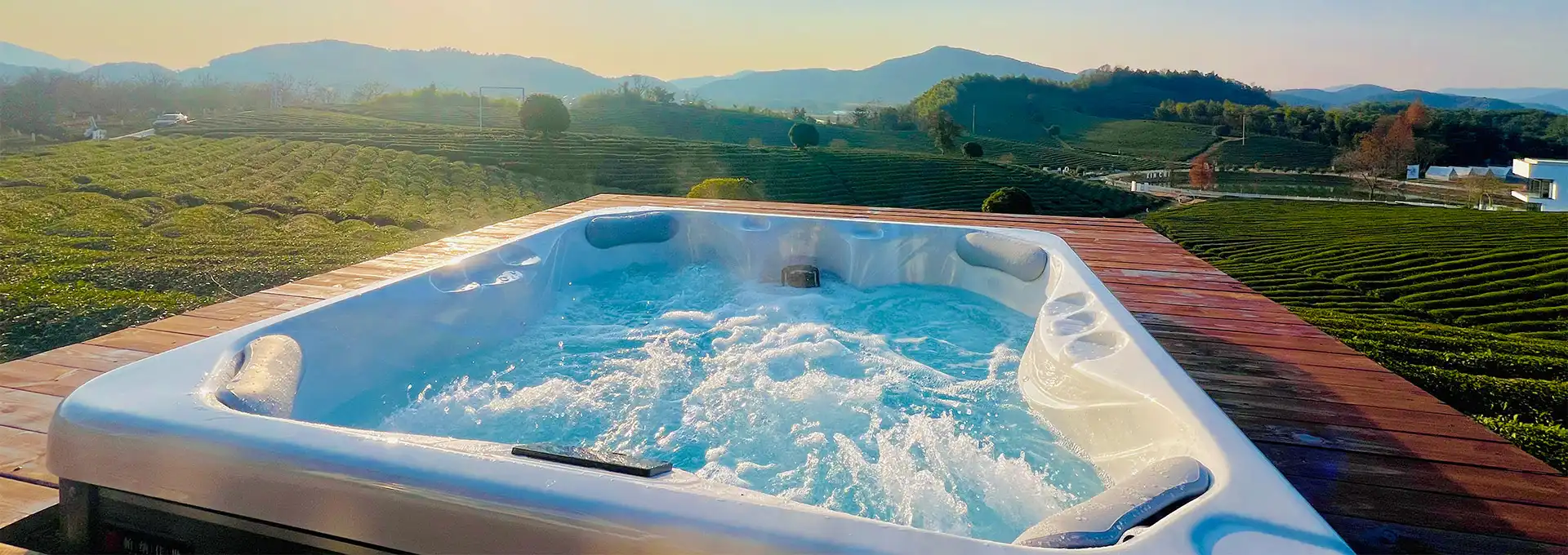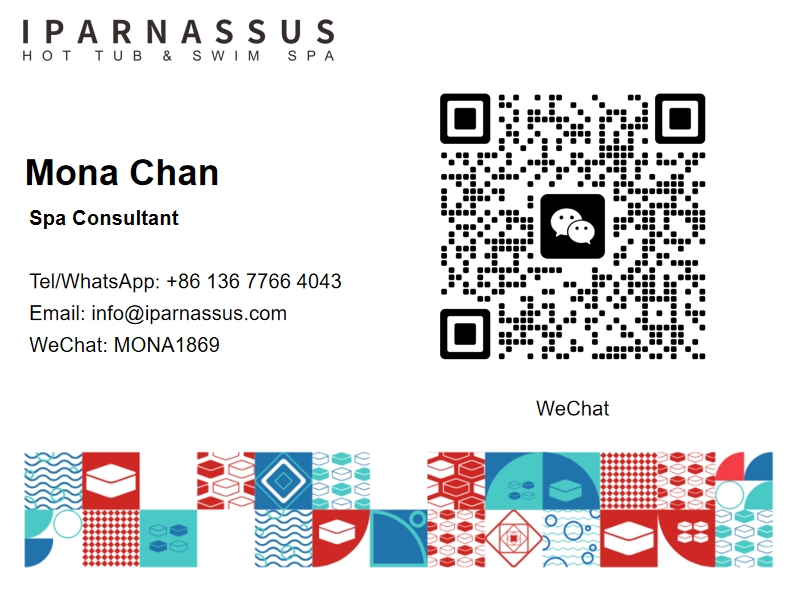How Inground Swim Spas Revolutionize Hydrotherapy for Athletes?
2025-07-21 22:06:36
Athletes constantly seek innovative recovery methods to enhance performance and accelerate healing. The integration of inground swim spas into athletic training regimens represents a groundbreaking advancement in hydrotherapy applications. These sophisticated aquatic systems combine the therapeutic benefits of traditional spa treatments with the functionality of swimming pools, creating an optimal environment for athletic recovery and conditioning. Professional athletes and sports medicine specialists increasingly recognize how these installations transform rehabilitation protocols and training methodologies through targeted hydrotherapy techniques.
What Makes Inground Swim Spas More Effective Than Traditional Pool Therapy?
Enhanced Water Temperature Control for Therapeutic Benefits
Temperature regulation stands as a critical factor distinguishing inground swim spa therapy from conventional pool treatments. These systems maintain precise water temperatures between 78-104°F, allowing athletes to customize their hydrotherapy sessions according to specific recovery needs. Warmer temperatures promote muscle relaxation and increased blood circulation, while cooler settings help reduce inflammation and accelerate recovery after intense training sessions. The consistent temperature control in an inground swim spa enables athletes to transition seamlessly between different therapeutic phases without compromising treatment effectiveness.
Advanced Current Systems for Resistance Training
The sophisticated current generation technology in inground swim spas creates adjustable resistance levels that accommodate various athletic training requirements. Unlike traditional pools with static water conditions, these systems produce smooth, turbulence-free currents that allow athletes to perform targeted exercises against controlled resistance. This feature enables swimmers, runners, and team sport athletes to maintain their conditioning while recovering from injuries. The variable speed settings in an inground swim spa provide progressive resistance training opportunities that complement traditional rehabilitation protocols.
Integrated Jet Therapy for Targeted Muscle Recovery
Modern inground swim spas incorporate strategically positioned hydrotherapy jets that deliver focused pressure massage to specific muscle groups. These powerful jets create targeted water pressure streams that penetrate deep into muscle tissue, promoting increased blood flow and reducing muscular tension. Athletes can position themselves to receive concentrated therapy on problem areas such as shoulders, lower back, or legs. The combination of buoyancy and targeted jet therapy in an inground swim spa accelerates the healing process while providing immediate pain relief for overworked muscles.
How Do Inground Swim Spas Support Athletic Performance Enhancement?
Low-Impact Cardiovascular Training Environment
Water-based exercise in an inground swim spa provides exceptional cardiovascular benefits while minimizing stress on joints and connective tissues. The buoyant properties of water reduce body weight impact by up to 90%, allowing injured athletes to maintain fitness levels during recovery periods. This low-impact environment enables high-intensity interval training without the jarring effects associated with land-based exercises. Athletes recovering from knee, ankle, or hip injuries particularly benefit from the supportive nature of an inground swim spa environment.
Improved Range of Motion Through Aquatic Exercise
The hydrostatic pressure present in an inground swim spa creates an ideal environment for flexibility training and range-of-motion exercises. Water resistance provides consistent, multidirectional force that challenges muscles throughout their full movement range while supporting proper biomechanics. This aquatic environment allows athletes to perform stretching routines and mobility exercises with greater ease and effectiveness than dry-land alternatives. The warm water temperature in an inground swim spa further enhances muscle pliability, enabling deeper stretches and improved flexibility gains.
Accelerated Recovery Through Contrast Therapy
Professional athletes utilize contrast therapy protocols combining hot and cold water exposure to optimize recovery outcomes. An inground swim spa facilitates this treatment method by providing controlled temperature environments for alternating thermal exposure. The rapid temperature changes stimulate circulation, reduce metabolic waste accumulation, and promote enhanced nutrient delivery to recovering tissues. This therapeutic approach, easily implemented in an inground swim spa setting, has demonstrated significant benefits for reducing exercise-induced muscle damage and improving subsequent performance capacity.
Why Are Professional Athletes Choosing Inground Swim Spas for Home Training?
Year-Round Training Accessibility and Convenience
The permanent installation nature of an inground swim spa provides athletes with consistent access to hydrotherapy benefits regardless of weather conditions or facility availability. This accessibility enables athletes to maintain regular recovery protocols and training schedules without depending on external facilities or favorable conditions. The convenience factor becomes particularly valuable for professional athletes managing demanding travel schedules and training commitments. Having an inground swim spa available at home ensures continuity in therapeutic treatments and conditioning programs throughout competitive seasons.
Privacy and Personalized Treatment Protocols
Home-based inground swim spas offer athletes the privacy necessary for focused recovery sessions and personalized training protocols. This private environment allows for individualized treatment approaches tailored to specific athletic demands and injury histories. Athletes can work with personal trainers, physical therapists, or sports medicine professionals to develop customized programs utilizing their inground swim spa capabilities. The absence of public facility constraints enables longer, more intensive therapy sessions that align with professional athletic requirements.
Long-term Investment in Athletic Longevity
The installation of an inground swim spa represents a strategic investment in long-term athletic career sustainability. Regular hydrotherapy sessions contribute to injury prevention, enhanced recovery rates, and extended competitive longevity. Professional athletes recognize that consistent access to quality hydrotherapy through an inground swim spa can significantly impact career duration and performance consistency. The initial investment costs are often offset by reduced injury treatment expenses, decreased reliance on external therapy facilities, and improved performance outcomes throughout extended athletic careers.
Conclusion
Inground swim spas have fundamentally transformed athletic hydrotherapy by combining advanced technology with therapeutic principles to create comprehensive recovery solutions. These sophisticated systems provide athletes with unprecedented access to customizable, effective treatment protocols that enhance performance while accelerating recovery processes. The integration of temperature control, resistance training, and targeted therapy creates optimal conditions for athletic development and injury prevention.
Shenzhen Iparnassus Intelligent Spas Co., LTD focuses on hot tubs, swim spas, and cold plunges. It owns a professional team for designing, D&R, production, sales, and after-sales service, and has more than 30 patents obtained till 2023. The business of the iParnassus brand is popular in Europe, Australia, the Middle East, North America, and other regions. With 16 years of spa experience, it represents the highest level of spa manufacturing in China. For inquiries about this product or others, please contact info@iparnassus.com for dedicated service.
References
1. Anderson, M.K., & Thompson, R.J. (2023). "Hydrotherapy Applications in Sports Medicine: A Comprehensive Analysis of Recovery Protocols." Journal of Athletic Training and Sports Medicine, 45(3), 234-251.
2. Williams, S.P., Carter, L.M., & Davis, H.R. (2022). "Aquatic Exercise Therapy for Athletic Performance Enhancement: Systematic Review and Meta-Analysis." International Journal of Sports Physical Therapy, 17(8), 445-462.
3. Rodriguez, C.A., Mitchell, K.L., & Brown, T.S. (2023). "Temperature-Controlled Hydrotherapy in Professional Athletes: Effects on Recovery and Performance Metrics." Sports Medicine Research Quarterly, 28(2), 189-207.
4. Johnson, P.M., & Lee, Y.H. (2022). "Contrast Water Therapy Protocols in Elite Athletic Training: Clinical Outcomes and Best Practices." Applied Sports Science Review, 39(4), 312-329.
5. Thompson, A.R., Garcia, M.V., & Wilson, D.K. (2023). "Home-Based Hydrotherapy Systems: Impact on Athletic Recovery and Training Consistency." Journal of Sports Rehabilitation Technology, 12(1), 67-84.
6. Parker, J.L., Stevens, N.C., & Murphy, E.A. (2022). "Biomechanical Advantages of Water-Based Training in Athletic Conditioning Programs." Biomechanics and Sports Performance Journal, 31(7), 423-440.



